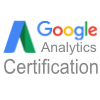
The Mentor You Look For To Polish MIS & DATA Analysis Talent
Increasing the workflow of an organization is a challenge when there is no adequate system to accumulate, store, and analyze data from various sources. Here comes the relief with the implementation of MIS, aka Management Information System. Candidates who would like to play the MIS executive role in future can join the MIS and Data analysis course in Noida at TrainingClass institute.
TrainingClass helps to turn dream into reality with the quality training program for those who have keen interest building career in MIS domain.
Get the Outline of MIS Data Analysis
To examine as well as to ensure how organization provides data information to its employees to increase work flexibility, a management information system needs to be activated. MIS aka management information system gathers data from various online sources to analyze those data and prepare a report on the basis of data. The data report helps in making management decision easy and fast for organizations.
An MIS executive or data analyst handles all these process behalf of the organization or firm he/she work in. An MIS executive decides which tool and system (depending on the availability) are required to maintain the data. He/she researches in-depth and consults with coworkers to find the best solution for the faster and error-free management information system analysis.
Reasons To Undergo MIS Training Course
An organization with the right MIS tool and system does not proper well compared to the organization that has utilized the output of MIS tool and system. Utilizing the MIS tool as well as the MIS system is a responsibility carried out by an MIS analyst. Therefore, if you aspire to be a qualified and expert MIS analyst then you will have to enroll for the MIS and Data analyst course.
After completing the MIS analyst course from a leading institute like TrainingClass, you can surely cater the responsibilities of an MIS analyst. Moreover, you can help your organization to take the best decision in every matter in increasing level of productivity.
MIS - Powering Informed Decision-Making and Organizational Efficiency
In the world of modern business, the effective management of information has become an indispensable tool for success. Management Information Systems (MIS) serve as the backbone of this information. MIS play a pivotal role in achieving five key objectives: capturing data, processing data, storing information, retrieving information, and disseminating information. One of its primary roles is to "Improve Decision-Making." By providing management with timely, relevant, and accurate information, MIS supports more effective and data-driven choices. It "Increases Efficiency" by streamlining processes and reducing manual effort, leading to cost savings and improved productivity. MIS doesn't just fulfill its functions; it also offers a multitude of advantages for organizations. It is a potent tool for "Generating Competitive Advantages" by providing organizations with the ability to make decisions based on real-time data, outmaneuvering competitors. The implementation of "Management by Objectives Techniques" becomes more effective with MIS, aligning organizational goals with managerial objectives.
Why Enroll for MIS Data Analysis Course
Certainly, there are plenty of names to choose for when you are for a reliable and affordable MIS and Data Analysis training programs. It is not less than a daunting task to find an institute that offers quality and real-time training program with genuine placement assistance. TrainingClass is one of the leading and dependable institutes that offer industry standard MIS and Data analysis course with qualified faculty who have years of experience working as MIS and DATA Analyst. Join us the TrainingClass for Basic Excel and Advanced Excel Training in Noida, Delhi and Gurgaon/Gurugram Centers as per your suitable timing like weekdays or weekends session. We are provide 100% Interview Guarantee after 60% -70% completion of this course. Let us have a look at the benefits in enrolling for MIS and DATA analyst course at TrainingClass,
- Candidates have the benefits to interact with faculty frequently
- They will get the opportunity to handle live projects after completion of the course.
- Candidates will get placement assistance after completion of the course.
Candidates will be given assignments and interview tips during the course that help them to prepare for job interviews with confidence.
MIS Data Analysis Software & Tools
Being an MIS and DATA analyst a candidate needs to uncover different software and tools to simplify as well as fasten the date analysis and managing process.
When you complete the MIS Data Analyst course from TrainingClass, you will acquire the skill and knowledge to choose the best MIS data analysis software and tools for the organization you will work for. Names of tools/software required to process MIS data analysis projects,
- Excel
- Rapid Miner
- Rattle GUI
- Qlikview
- Trifacta
Career Prospect as MIS Data Analyst & Industries Look for Experienced MIS Professionals
Pursuing the MIS and DATA analyst course helps you to boost your career towards money-spinning direction. After completing the course you can do jobs in sectors like – Marketing, Education, Manufacturing, Finance, and others. The MIS & DATA Analyst course at TrainingClass makes you able to serve role as business analyst, data analyst, MIS executive, system analyst, database administrator, and more with confidence and knowledge.
We help, advice and guide you to manage, analyze, and control data like a pro. Join MIS & Data Analytics course today & hone your data analyzing skill right now and right here at TrainingClass Delhi NCR.
MIS & Data Analyst in Excel & Access, SQL with Power BI Practical Training
Course Durations: 65 - 70 Hours with Industry Experts for 1 to 4 Modules Deliver Method:
- LED or Projector based classroom for better comprehension
- Real time training session and workshop to practice their learning
- Highly friendly and responsible admin support
- Regular assignments and simple tests are organized to judge your skills
- Workshop Exposure, PD Classes & Interview Session by Industry Experts.
Note: Classes are also available on Module Basis.
MIS Training Course Modules
Introduction to Advanced MS Excel:-
- Circular References error, Rectify Circular Reference, Formula Auditing, Structured Reference
Solve The Real World Excel Problems with Functions:
- Mathematical Functions:-
Abs, Sum, Sumif, Sumifs,Count, Counta, Countif, Countifs,Countblank, Average, Averagea, Averageif, Averageifs,Subtotal, Aggregate, Rand, Randbetween, Roundup, Rounddown, Round, Sumproduct
- If Formulas:
- If, If with OR, If with AND, If with AND &OR, If with Countif, If With Sumif.
- If with Trim, If with Concatenation, If with Left, Mid, Right.
- Nested If (For Multiple Conditions), If condition used more than one time in the same formula.
- Nested if with left, Mid, Right
- More If Formulas:
- Nested if with Multiple Text Functions, TAX Calculation, Other Critical Lookup Formulas
- Nested if with VLook-up And Hlookup.
- Introduction to Name Manager: Name Ranges and Apply the Name Ranges on the combination of Cells.
- Date & Time Function:-
Date, Day, Month, Year, Edate, Eomonth, Networkdays, Workday, Weeknum, Weekday, Hour, Minute, Second, Now, Today, Time
- Statistical Function & Other Functions :-
Information Function: IsOdd, IsEven, IsError, IsNumber, IsText, IsBlank, IsRef, ISNA
Some Other Data Base Functions :Dsum,DCount, DAverage, DMax, Dmin
- Lookup & Reference Functions:-
- Discussion on Lookup Functions, Use of Lookup, Vlookup, Hlookup, Index, Indirect Match, Offset, Transpose.
- Vlookup, Hlookup with Name Range And Match .
- Find Data In Opposition by Index Match.
- Vlookup, Hlookup with Multiple Functions, Vlookup, Hlookup with arrays.
- Array With Multiple Formulas:
- Array Formulas work and Use of the Array Formulas, Acceptance of Array Formulas in today’s scenario.
- Array With Sumifs, Countifs, Sumproduct , Large Functions.
- Text Functions & Data Validation :-
Char, Clean, Code, Concatenate, Find, Search, Substitute, Replace, Len, Right, Left, Mid, Lower, Upper, Proper, Text, Trim, Value, Large, Small, Filters (Basic, Advanced, Conditional), Sort (Ascending, Descending, Cell/ Font Color), Conditional Formatting, Data Validation, Group & Ungroup, Data split.
- Pivot Table and Pivot Charts with Slicer:
- Do the Multiple Field Setting in Pivot Table.
- Pivot form Multiple Source of Data, Data Ranges, Name Range.
- Group Pivot Table Items, Multi-level Pivot Table, Calculated Field/Item
- Perform the % calculation on the basis of multiple fields, Using Slicer.
- Advanced Chart Technique:-
How To Make Dynamic Charts, Bar Charts, Pie Charts, Scatter Chart, Line Chart, Column Chart, Gantt Chart.
- Advanced Dashboard:-
- Preparation of Advanced Level of Charts: Gnatt Chart, Bubble Chart, Waterfall Chart, Use of Data Validation in Charting And Handle With Controls (Combo Box, Spin Box, List Box and Option Box.)
- Offset function, Combination Of Charts, Time Series Analysis, Visualizing Data.
- Use of Formulas Like Offset, Match, Sumif, Sumifs and many more to prepare the Dashboards.
- Data Collection Method With Data Quality:-
- Analysis:-
- Single/Multidimensional Analysis, Like Three Dimensional (3D) Tables, Sensitive Analysis Like Data Table,
- Solve Real World Problem: Goal Seek, One-Variable Data Table, Two-Variable Data Table, Scenario Manager.
- Report Development
- Live Project Session
- What is VBA & How VBA Works with Excel?
- Quick Review of Macros
- Introducing the Visual Basic Editor
- Uses of record Macros
- Understanding and creating modules
- Programming Concepts
- VBA Sub and Function Procedures
- How to create a message box
- Write a Program to update and retrieve information using Input Box
- Understanding and using Select Case statement
- How do I define a variables and Rules for defining a Variables Name and Type
- Creating And using Variables
- Working with range Objects
- How to save and Protect Modules
- Decision Makers
- If……Then……Else
- If……Then……ElseIf……If
- Other Kinds of Loops
- Working with Do While u. Loop Procedure
- Do…… Until Loop and Do…… Loop Until
- Do……While loop and Do…… Loop While
- For each…… Next
- For……Next
- Workbook Objects Create or Add Single and Multiple Workbooks
- Workbook Save and Save AS
- Open Single and Multiple Workbooks
- Close Specify and Multiple Workbooks
- Activate From one workbook to another Workbook
- Get Workbook Name and Paths
- Hide and Unhide for Single and Multiple Workbooks
- Protect and Unprotect Worksheets
- Worksheet Objects insert a single and Multiple Worksheets
- Delete Specific and multiple worksheets
- Get Count of Worksheets
- Select a Specific and all Worksheets
- Get All Worksheets Name
- Hide and Unhide For Single and Multiple Worksheets
- Sort and Move worksheets
- Calculate entire worksheet
- Using VBA and worksheet Function
- Cell objects insert Single and multiple Row , Column and Cells
- Delete Single and Multiple row, Column and Cells
- Get Range or Address of Cell and Selection
- Navigate from one Cell to another Cell
- Select specific Range, Cell, Rows and Column
- Types of Selection and Offset method
- Insert Function In cell
- Reading and Writing Arrays
- Defining Arrays
- Form Controls and User Forms (Create and Design an user Form)
- Working With User Forms & User Forms Events Like List Box, Combo Box, Option Buttons, Check Box, Text Box, Labels, Command Button, Toggle Button.
- How To Create Dynamic Dashboard On User Form With Different Controls
- VBA Programming Functions
- Create a Sum Functions
- Create Multiply Function
- Create Count Function
- Extract Text & Number
- Proper Function
- Vlookup Function
- Public or Private function
- Excel VBA Power Programming for VBA Macros
- Working with Dynamic Ranges. Protecting worksheets, Cells and Ranges. Working with Multiple Files. Opening & saving Files
- How to Analyze Data On multi Worksheets And Build Summary sheets
- How to Access the Windows File and Folder System to Open and Close Workbooks
- How to protect your code Against Errors
- How to create Basic Report Generation Tools Using Excel VbA, Microsoft Word and PowerPoint
- Connection between Excel VBA & other platforms
- How To Establish Connection Between Excel Vba And Outlooks Through Vba
- Effective Error Handling
- Automation Development Reports & Live Projects
MS Access is a Microsoft Relational Database Management System (RDBMS) Topics Covered as follows:
MS - Access:-
- Understanding Databases
- Starting and Opening an Existing Database
- Moving Around in Access
- Understanding Datasheet View & Design View
- Using the Mouse Pointer to Navigate
- Using the Keyboard to Navigate
- Creating Tables
- Creating a Database
- Creating a Table Using the Wizard
- Creating and Modifying a Table
- Adding Fields to Tables
- Adding and Editing Records
- Printing Tables
- Moving and Deleting Fields
- Deleting Records
- Working with Tables
- Formatting a Table
- Modifying Field Properties
- Sorting Records in a Table
- Finding Records in a Table
- Using Filters with a Table
- Establishing Relationships Between Tables
- Creating Subdatasheets
- Importing Records From an External Source
- Designing a Form
- Creating a Form Using Auto Form
- Creating a Form Using the Form Wizard
- Adding Controls to a Form
- Modifying Control Properties
- Resizing and Moving Controls
- Entering Records into a Form
- Designing a Report
- Creating a Report Using Auto Report
- Creating a Report Using Report Wizard
- Adding a Control to a Report
- Formatting a Report
- Resizing and Moving Controls
- Creating Calculated Controls
- Creating and Using Queries
- Creating and Running a Query
- Specifying Criteria in a Query
- Using Comparison Operators
- Creating a Calculated Field
- Creating a Multiple-Table Query
- Automating Tasks
- Creating an Auto Keys Macro
- Using Controls to Run a Macro
- Assigning a Macro to an Event
- Assigning a Macro to a Condition
- Testing and Debugging a Macro
SQL:-
- SQL Overview
- Relational database concepts, specific products
- SQL syntax rules
- Data definition, data manipulation, and data control statements
- Getting acquainted with the course database and editor
- SQL SELECT statements
- Clauses
- The SELECT clause: columns and aliases, where expressions, order by expressions how null Values behave
- SQL Functions and Expressions
- Eliminating duplicates with DISTINCT arithmetic expressions
- Replacing null values
- Numeric operations, including rounding
- Date and time functions
- Nested table expressions
- Case logic
- Other expressions in specific DBMS Products
- SQL Updating
- The INSERT, UPDATE and DELETE statements
- Column constraints and defaults
- Referential integrity constraints
- SQL Joins
- Inner joins with original and SQL 92 syntax
- Table aliases
- Left, right and full outer joins, Inner joins
- Self-joins
- SQL Sub Queries and Unions
- Intersection with IN, and, Between
- Sub queries
- Difference with IS NULL and IS NOT NULL sub queries
- The purpose and usage of UNION and UNIONALL
- SQL Summarization
- The column functions MIN, MAX, AVG, SUM and COUNT, UPPER, LENGTH, LOWER
- The GROUP BY and HAVING clauses Grouping in a combination with joining
Module 4.1 – Power BI Desktop, Custom Visuals,
Introduction to Power BI:- Power BI Component, Types of Reports in Real-time Usage, Power BI Tools and Implementation Plan Power BI Licensing and Excel Analytics.
Power BI Desktop Tool:-
- Report Visuals, Fields, Pages and Filters
- Data and Relationship Option, PBI Canvas
- Get Data from DAT Files, Excel Files, Access Files
- PBIX and PBIT Files And Re-Using Reports
- Data Import Options Designing Simple / Basics Reports in PBI
- Visual Interactions in Power BI - Options Spotlight Options with Visuals, Real-time Use
- Slicer Visual in Power BI and Data Filters
Hierarchies & Filters:-
- Creating Hierarchies. Drilldown, Drill Up Reports
- Filters : Types and Usage in Real-time, Conditional Filters, Visual Filters, Page Filters, Report Filters
- Drill-thru Filters with Hierarchy Levels TOP N Filters – Usage Filtering at Category Level, Import and Direct Query with Power BI.
Power Bi Visuals:-
- Table Visuals & Properties, Data Bar and Data Scaling Options
- Divergent Colors and Data Labeling Matrix : Sub Totals, Grand Totals
- Slicer Visual - Properties, Alignment Single Select and All Options
- Chart Reports - Common Properties Axis, Legend Types- Stacked Bar, Column, Line charts Clustered Bar, Column, Line Chart
Power Bi Visuals with Different Types:-
- Tree Map, Funnel and Gauge Reports, Map Reports
- Single Row Card and Multi Row Cards
- Callout Values in KPI Reports and Use, Indicator, Trend and Target Goals in KPIs
- Using Buttons, Images in Power BI Canvas
- Bookmarks in Power BI Desktop – Usage Using Bookmarks for Visual Filters
Module 4.2 – Data Modeling with Power Query
Power Query Basic Operations:-
- Power Query Usage & Operation Types, QUERY Concept, Properties, Validations
- Power Query - Data Mash Up Operations
- Basic Data Types, Literals and Values, Expressions
- INVOKE Functions & Execution Results
- Power BI Canvas: Edits, Applied Steps, Frowns, Query Header Row Formatting
Power Query Usage:-
- Power Query Transformations Categories
- Query Combine & Merge Transformations, Join Options In Merge Transformation
- Truncate, Replace, Split, Reduce Rows, Manage Columns, Hide / Show Columns Grouping, Aggregations, Column Formats
- Transpose, Reverse Rows Transformations
- Power Query - Row Count And Replace, Data Type Detection - Scenarios, Use
- Data Type Conversions And Value Replace Fill Up And Fill Down,Pivot And Unpivot Transformations
- Move, Filter And Converttolist() Split, Format, Merge, Extract, Parse, Date,Time
Module 4.3 – Data Modeling with DAX
DAX Functions: -
- DAX as library of Functions, Types, Variables, Operators Dax Formula With Excel, Limitations
- DAX Architecture and Entity Sets
- Rules OF DAX, Working Options, Syntax, Functions
- ROW Context and Filter Context, DAX Structures and Syntax Options
- Creating and Measuring with DAX Creating and Using Columns with DAX
Advance DAX Functions:-
- Data Modeling Options in DAX, Detecting & Adding Relations for DAX
- Power BI DAX Functions - Types, Usage, Cheat Sheet
- Power BI Reports - DAX Functionalities Calculated Columns, Aggregated Measures
- Quick Measures in DAX - Auto validations, DAX Performance Date and Time & Text Functions, Logical & Mathematical Functions
- Data Modeling with DAX. Creating Roles
- SELECTEDVALUE, FORMAT Functions RELATED, COUNTROWS CALCULATE, SUM, ALL
- Report Development
- Live Project Session
Please Find the Course Duration Details Classes and Course can be Designed / Customized as per request. Classes are available on weekdays and weekend.
Course Modules |
Course Details |
Duration (Hours) |
Duration (Weekend) |
Duration (Weekend) |
Duration (Weekdays) |
|---|---|---|---|---|---|
Module 1- 4 |
MIS & Data Analyst with Power BI |
65 - 70 Hours |
5 Months |
3 - 3.5 Months |
2 - 2.5 Months |
Module 1- 3 |
MIS & Data Analyst |
45 - 50 Hours |
4 Months |
2.5 - 3 Months |
1.5 - 2 Months |
Module 1-2 |
Adv. Excel & VBA Programing |
30 - 35 Hours |
3 - 3.5 Months |
2 - 2.5 Months |
1 Month |
Module 2-3 |
VBA Macros & MS Access & SQL |
35 - 40 Hours |
3 - 3.5 Months |
2 - 2.5 Months |
1 Month |
Module 1 |
Advanced MS Excel |
15 - 20 Hours |
2 Months |
1 Month |
2 Weeks |
Module 2 |
VBA - Macros & Dashboard Programming |
20 - 25 Hours |
2 - 2.5 Months |
1 - 1.5 Months |
3 Weeks |
Module 3 |
MS Access & SQL |
15 - 20 Hours |
2 Months |
1 Month |
2 Weeks |
Module 4 |
MS Power BI |
20 - 25 Hours |
2.5 - 3 Months |
1.5 - 2 Months |
3 Weeks |
Days |
Class Duration |
|---|---|
Monday - Friday |
1.5 Hours |
Saturday - Sunday |
2 Hours |
Sunday |
2 Hours |
MIS FAQ (Frequently Asked Questions.)
The term MIS translated refers to the management information system. The input and output of information in any organization should be handled with expertise is the organization is to move on to the next level in development. The MIS is used to coordinate the results of teams, individual members, quarters, stores, etc in an excel sheet. This represents the total manager which organizations use to evaluate the performance or otherwise of their line of process and at the same time evaluate the effort of individuals as well as a team effort in any organization. The results obtained are used to map out the strategies that are needed for growth and development.
Talking about the MIS report, it contains the details of the entire process of any setup. Starting from assistant managers to the executives of the company, they all rely on the information supplied through the spreadsheet of the MIS to fashion out policies that will move their brand of service forward. In this report, areas of challenges are highlighted and necessary actions will be taken to address such. Areas of strength are also noted and actions to sustain the tempo will be taken. It also involves the performance index of individuals as well as the team in the organization.
The world that we live in is going completely digital in all respects. Every operation that concerns companies of this era that wants to remain competitive is all programmed on the computer. The planning and execution of all the tasks put together are what is regarded as MIS job profile. The MIS Executive is saddled with the responsibility of coordinating all the aspects of planning, coordinating and directing all computer-related activities. The function of making the computer system to measure up with the goals of the company is coordinated by the MIS executive.
There are various types of MIS reports and we shall start with the Management reporting system that is responsible for coordinating all the finances of the company that will be in the interest of the organization. There are sales and marketing control. Mention can also be made of the Process Control system. Taking it further, there is the Inventory control as well as the Finance and Accounting control. We have the Office Automation/Enterprise Collaboration and not forgetting the Human Resources Control. All the MIS report types work hand in hand to achieve the objectives of the company. The effectiveness of one depends on the other; in essence, all the MIS reports should be in place for overall effectiveness.
You have to be a degree holder to qualify for this course in the first place. This is the name given to an academic discipline or major that is computer-based. Every company needs an expert in this filed because it is used in formulating policies by companies and at the same time when problems arise along the line of operation, the experts in this field are called upon to resolve the issue because they are all computer-based. The students are thought about how to create new opportunities for brands using IT technology and ways have avoiding possible pitfalls along the line of production in the company.
This is a computer-based course that opens the students to various aspects of excel that companies need to sustain a free flow in their line of processing. Students that enroll for this course will be taught various aspects of excel such as Conditional Formatting, Validation, Pivot Table, Chart, Advanced Filtering just to mention a few. For those that want to go for the Advanced Excel Course, they are expected to be up in grips with the spreadsheet to be able to measure up effectively with the demands of the course content. Those that become certified through this course will be able to effectively manage data in all respects.
Many companies have gone done into the dustbin of history because their finances were poorly managed. This is perhaps the reason why we have the MIS database which is the total of all the finances of the company put together and effectively managed to enhance the growth and development of the company. Regular reports of the financial operation of every level of management will be delivered by the MIS database. Through this means, special reports corning the finances of the company can be obtained quite easily through the deployment of this software into the line of operation of the company. The MIS database is a key factor in the survival of any company.
The MIS reporting in finance stands for a monthly report on the finances of a company. Through this report, it will be easy for the company to measure their gains and losses. When this report is analyzed, it will be easy to take actions that matter in the best interest of the company. This is a brilliant way through which companies compare results of previous months and they use it to fashion out a blueprint for better performances. It is also used to compare the results of the previous year’s monthly financial performances. This is software that helps companies to recover from areas of financial leakages as well as build on the strengths and gains of the previous months.

















